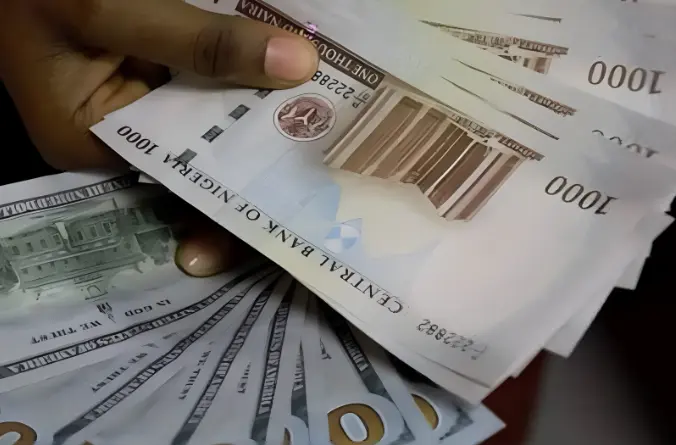By Milcah Tanimu
On Thursday, the Nigerian naira experienced a decline against the United States dollar, settling at N1,402 at the official market. This represents a decrease of N12 or 0.86% compared to the previous trading session’s close at N1,390, according to data from the FMDQ exchange securities.
Wednesday saw no trading activity due to the Worker’s Day celebration.
Meanwhile, at the Nigerian Autonomous Foreign Exchange Market (NAFEX), the intraday high closed at N1,445 on Thursday, weaker than the N1,450 recorded on Tuesday. Similarly, the intraday low depreciated to N1,299 on Thursday compared to N1,200 on Tuesday.
Dollar supply at NAFEX saw a 3.1% increase, amounting to $232 million on Thursday, up from $225.36 million recorded on Tuesday.
The naira’s depreciation can be attributed to renewed demand for the greenback across both official and parallel markets.
In April, the naira exhibited a positive trend, gaining N28.15 on the final trading day, settling at N1,390.96/$ compared to N1,419/$ on April 29. Trading volumes also surged by 52.45% to $225.36 million from the previous volume of $147.83 million.
Conversely, Bureau De Change operators reported a reduction in the naira’s value at the parallel market on Thursday. Traders purchased the dollar at N1,310 and sold at N1,360, yielding a profit margin of N50. However, they noted that while demand for the dollar remains high, it is not as pronounced as two months ago when the naira slid to N1,900.
Abubakar Yahu, a BDC operator in Wuse 2, Abuja, highlighted the need for stability in the exchange rate, anticipating a possible drop in rates. Another currency trader, Ibrahim Isa, echoed this sentiment, emphasizing the importance of sustained stability for the economy’s well-being.

